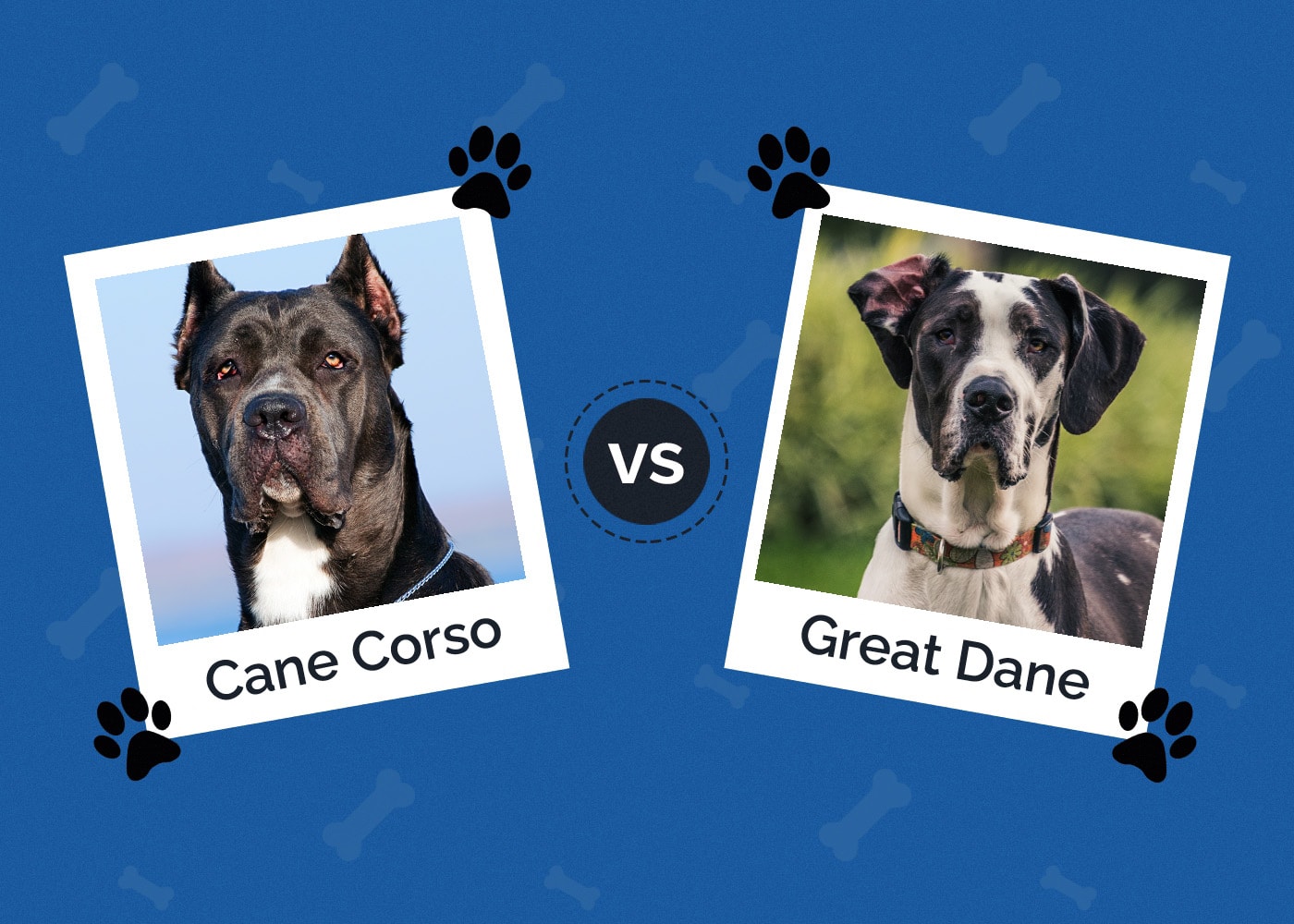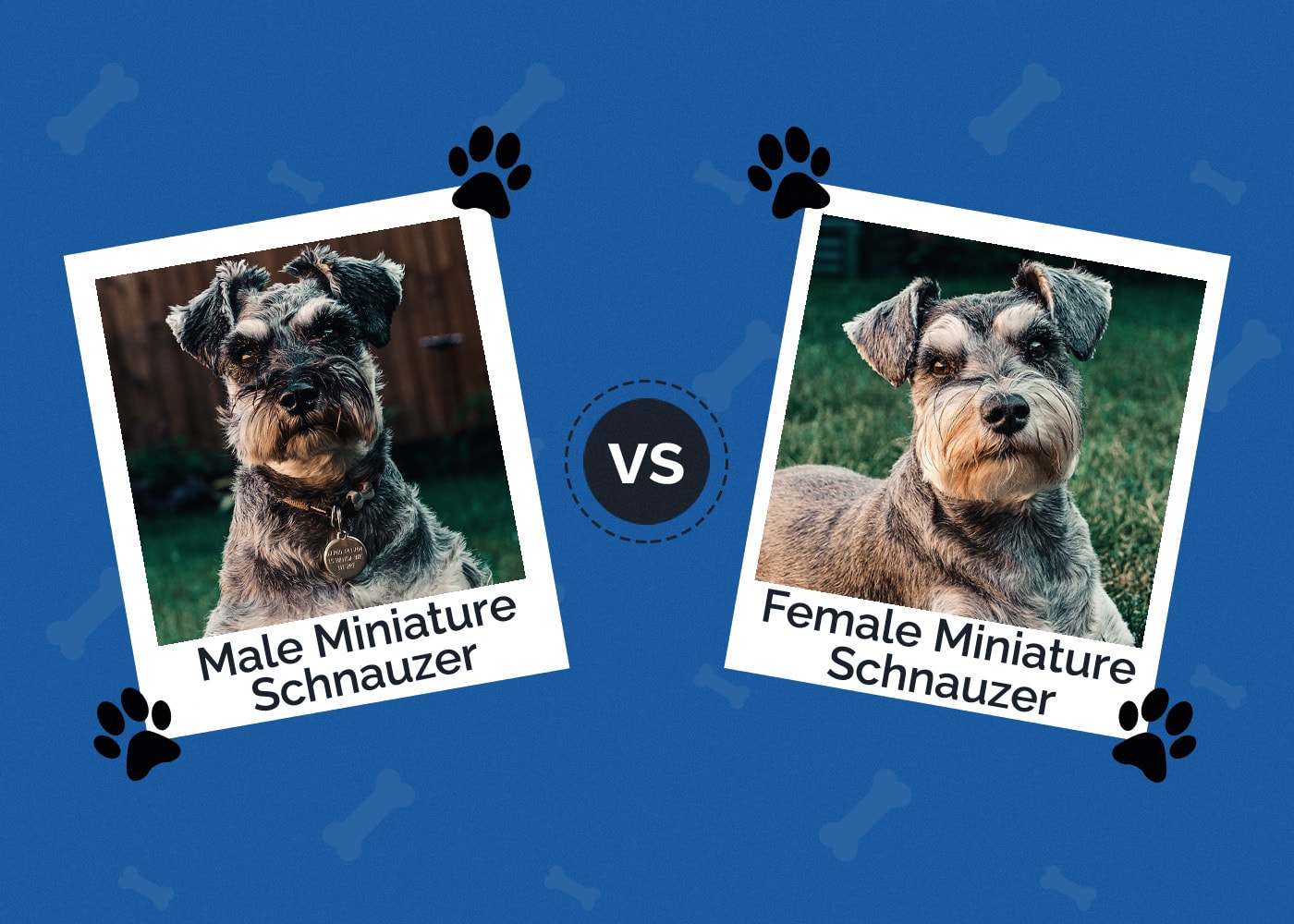Sheepadoodle vs Labradoodle: Which One Is Right for Me? (With Pictures)
By Hanh Duong
Updated on

Many dog lovers want a doodle in their life but deciding which exact kind of dog breed is suitable for them can be very challenging. You may find these canines similar in many ways, but it is wise to learn about their differences. Before looking at the difference between a Sheepadoodle and a Labradoodle, are you thinking of getting one but having trouble deciding which one is the right fit for you? Or perhaps you’ve heard their names before but don’t know what they are? If either of these cases applies to you, congratulations! You’re in the right place.
We’re going to look at Sheepadoodles and Labradoodles in detail, highlighting their differences and similarities so you can decide which of these well-known breeds is the best suited for your lifestyle.
Visual Differences
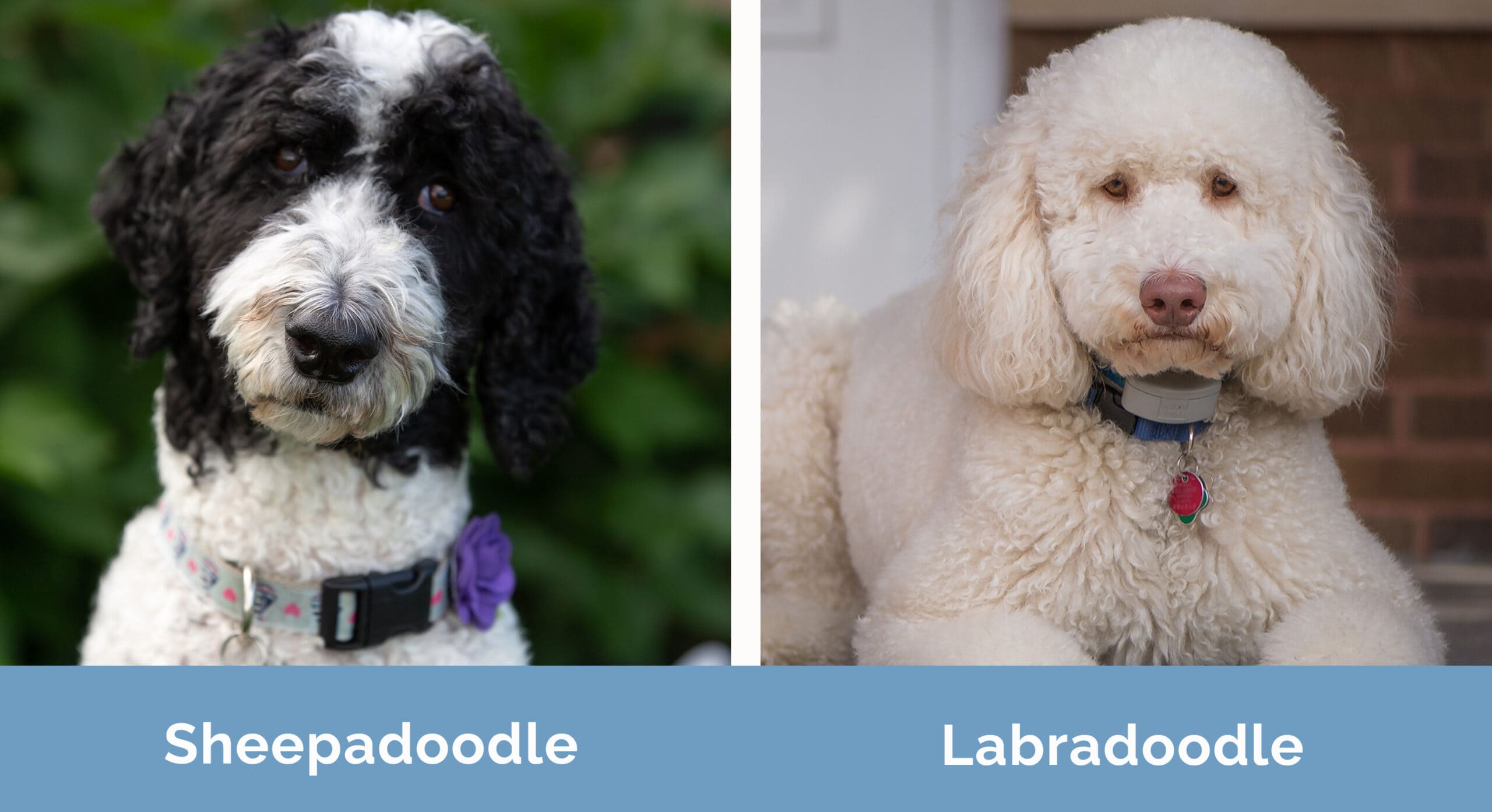
At a Glance
- Average height (adult): 18–27 inches
- Average weight (adult): 65–85 pounds
- Lifespan: 12–15 years
- Exercise: 2+ hours a day
- Grooming needs: Moderate
- Family-friendly: Yes
- Other pet-friendly: Yes
- Trainability: Intelligent, loyal, easy to train
- Average height (adult): 22–25 inches
- Average weight (adult): 50–75 pounds
- Lifespan: 10–14 years
- Exercise: 2+ hours a day
- Grooming needs: Moderate
- Family-friendly: Yes
- Other pet-friendly: Yes
- Trainability: Intelligent, eager to please, easy to train
 Sheepadoodle Overview
Sheepadoodle Overview
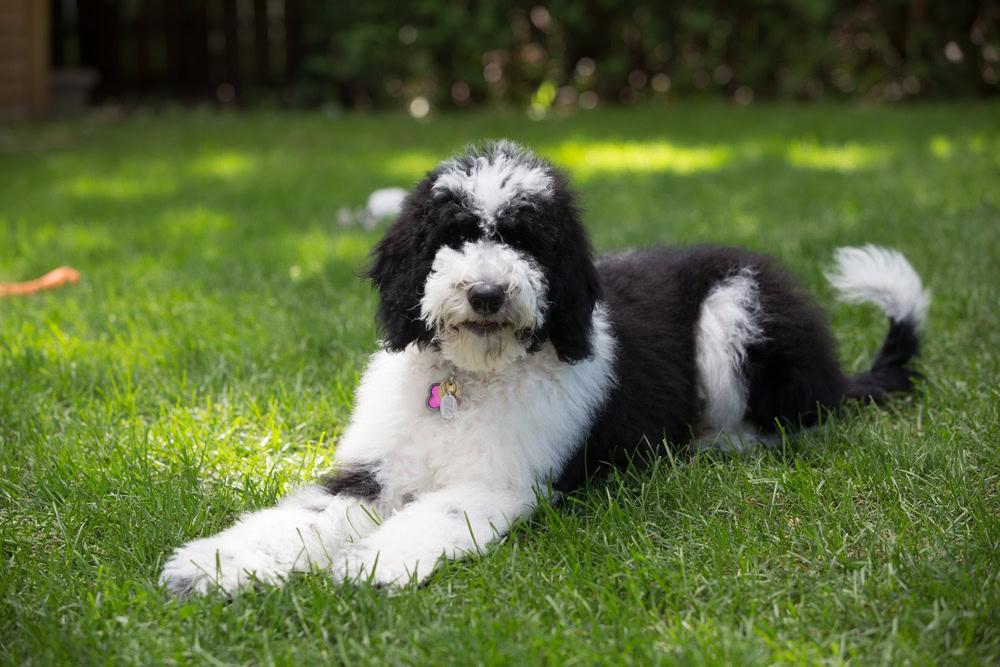
The Sheepadoodle is a cute, fuzzy hybrid of an Old English Sheepdog and a Poodle. They have become increasingly popular because of their sweet personalities, teddy bear-like appearance, and low shedding. Due to the fact that the Sheepadoodle is not a pure breed, there are no strict guidelines regarding the canine’s dimensions, look, or color. The size of a Sheepadoodle will vary depending on whether the Old English Sheepdog was bred with a Standard Poodle, Toy Poodle, or Miniature Poodle.
Personality
The Sheepadoodle gets a lot of the easygoing temperament from the Old English Sheepdog, a shaggy, good-natured breed developed to drive cattle and sheep to market. Typically, Sheepadoodles are friendly, sweet, and playful. They love children and other dogs in the house, making them a great family member. While these pups may bark to alert you if a stranger is approaching, they tend to be a little more laid-back than breeds designed especially for guarding duties.
Training
Fortunately, Sheepadoodles have both the intelligence of the Poodle as well as the working instincts of the Old English Sheepdog. The traits this mixed breed gets from their parents will influence how you should train them. Poodles are usually very eager to please their owners by sitting on command and picking up tricks, whereas Old English Sheepdogs occasionally exhibit independence of thought.
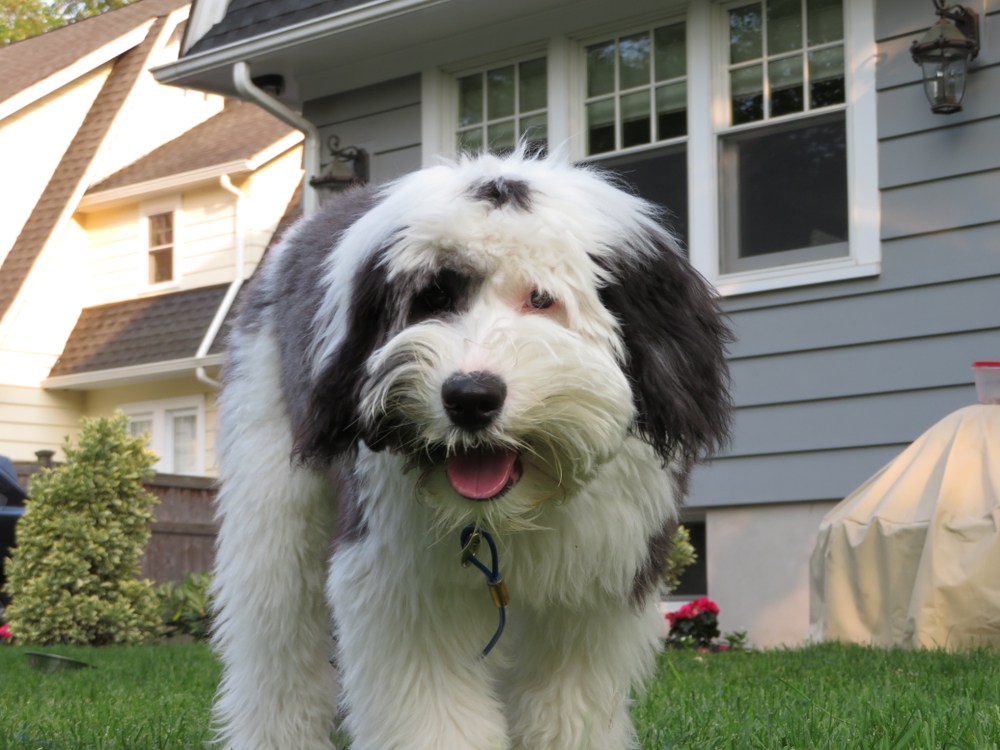
Grooming
No canine is fully hypoallergenic, but this Old English Sheepdog and Poodle combination has a coat that sheds very little. Therefore, Sheepadoodles can be a good choice for those who are allergic to fluffy animals. Brushing your pet regularly, plus bathing and trimming every 8–12 weeks, will keep their coat in excellent condition. You should also routinely clean out the wax and debris from their ears and cut their nails when they’re long enough.
Health & Care
Sheepadoodles are generally healthy dogs with a lifespan of 12 to 15 years. However, since Poodles and Old English Sheepdogs can be susceptible to conditions such as hip dysplasia and hypothyroidism, you should talk to the breeder about the puppy’s health. It’s best to consider a reputable breeder who performs health screenings on both parents if you’re searching for a Sheepadoodle.
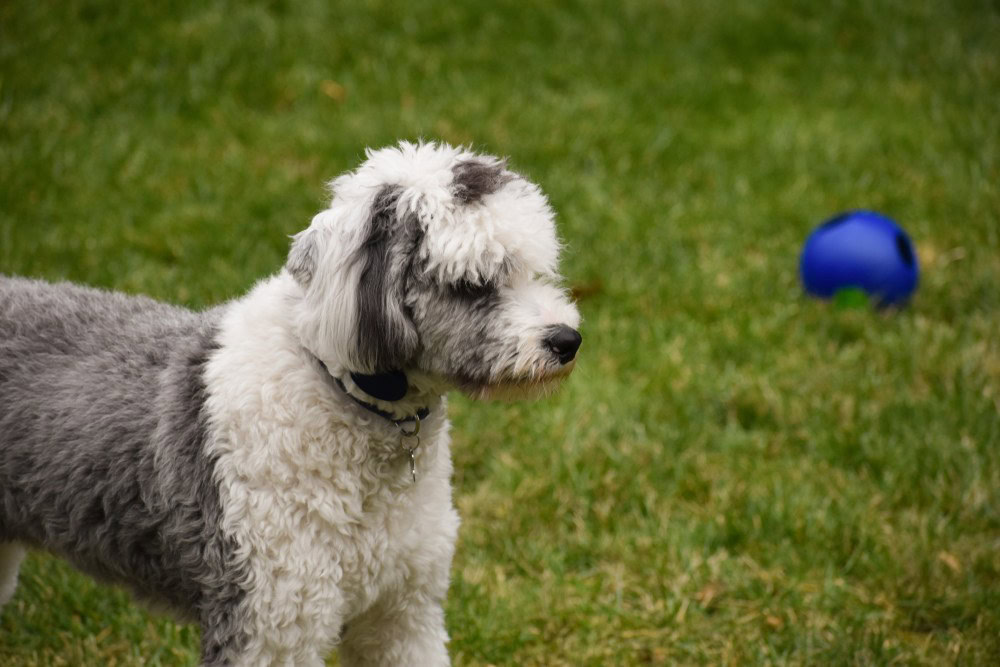
Suitable For:
Sheepadoodles are usually big dogs that do best in homes with fenced yards. If you live in an apartment, you will have to take your dog for a walk every day. Due to their high energy, Sheepadoodles need regular exercise for their general health and well-being. In addition, their thick coats make them great pets for areas with cold weather.
Labradoodle Overview
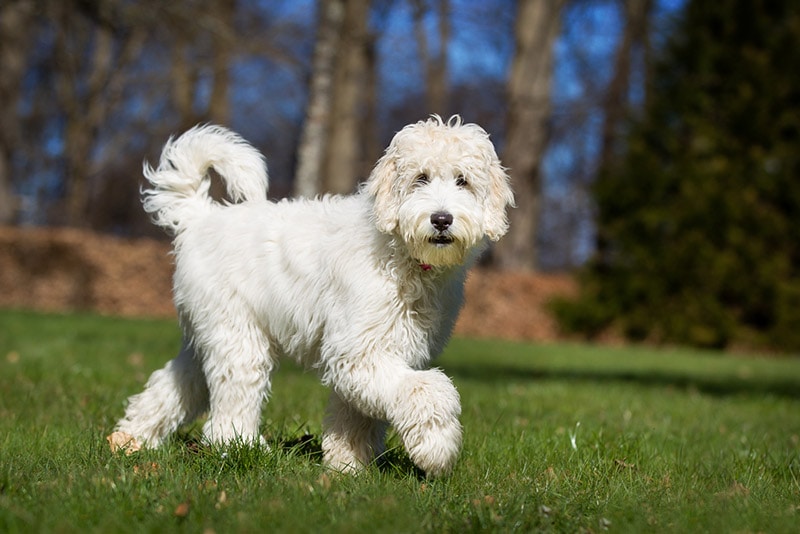
Labradoodles are renowned for being friendly, devoted family pets. Often sought after by allergy sufferers because of their minimal shedding, this Labrador Retriever and Poodle mix makes an excellent household dog. They are also among the most popular canine breeds in the United States.
Personality
The friendly Labradoodle welcomes and treats everyone as if they were close friends. These canines are dedicated and enthusiastic companions. Sometimes they can be gentle, but you can see their other sides when they jump and play exuberantly to express their pleasure. Since the Labradoodle was bred to be non-aggressive, they also tend to be mellow, like the Sheepadoodle. Nonetheless, as with any breed, there are some dogs that aren’t particularly friendly, but a well-trained and socialized Labradoodle with a typical temperament is not.
Training
When you first bring your Labradoodle puppy home, it’s crucial to begin training them. Fortunately, these pups are highly trainable and pick up things quickly, so even novice dog owners can succeed. But if you don’t know how to train or don’t have time for it, obedience school may be the best solution. Labradoodles are highly motivated by food and react well to positive reinforcement and consistency.
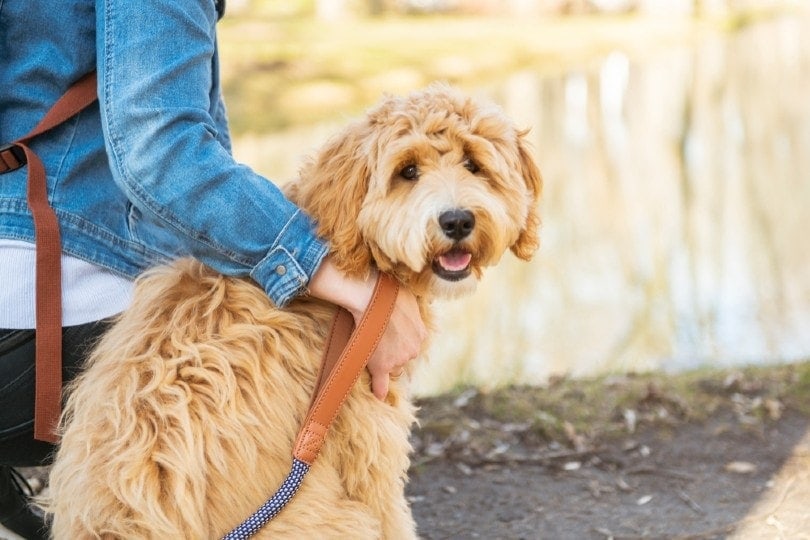
Grooming
Labradoodles’ coat patterns can vary depending on which of their parent’s genes are more dominant. All kinds of coats shed very little, but maintenance is still necessary. Generally, expect to brush your dog at least once a week, but only bathe them when necessary—which isn’t often since they don’t have a strong doggy odor. Brush their teeth regularly to avoid gum disease and related problems. Also, take additional care of their ears because they, like Labs, can be susceptible to ear infections.
Health & Care
Generally, Labradoodles are healthy dogs and can live up to 10–14 years. But because these canines are a cross between a Lab and a Poodle, they are also prone to health issues that can affect either of their parents. If you’re seeking to adopt a healthy Labradoodle, make sure the breeder performs DNA tests on the parents of the dog you intend to get to search for any abnormalities in their genes.
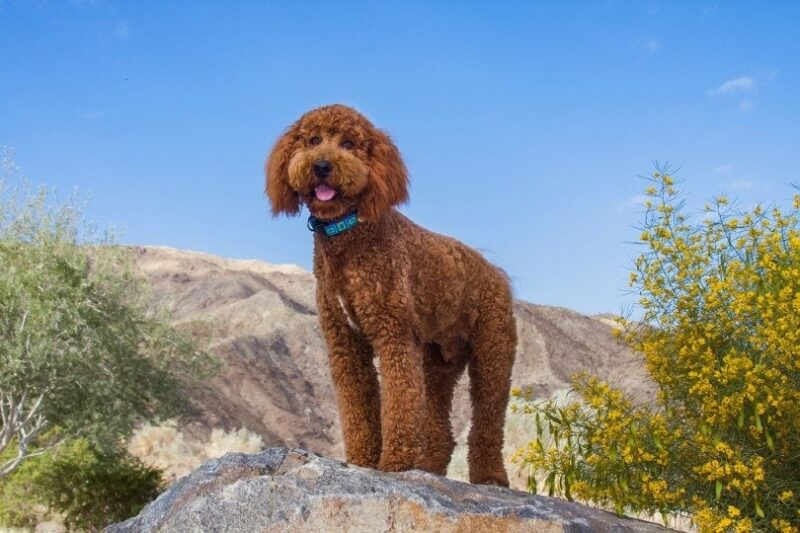
Suitable For:
Like Sheepadoodle dogs, Labradoodles are also trainable and a good choice for first-time owners. When it comes to where these canines can live, they are very flexible. While Standard Labradoodles are large, they can still live in apartments, but you must exercise them daily to keep your beloved pet healthy. Labradoodles definitely love a large home with a sizable, enclosed yard the most. This breed is well-behaved and can live with people of all ages, but owners still have to put effort into training that uses mainly positive reinforcement and exercise to meet their activity demands.
Which Breed Is Right for You?
As you can see, Sheepadoodles and Labradoodles have a lot in common. These two breeds have low-shedding coats and great personalities, making them perfect pets even for first-time owners. They are incredibly friendly and enjoy spending time with their family members. However, these pups vary in size, look, and a few other characteristics.
Sheepadoodles tend to be bigger and require more frequent brushing to prevent mats. Both are sensitive and eager to please, but the Labradoodle is usually more protective and can learn training lessons a bit faster than the Sheepadoodle. But the great thing is that you will still receive a loving and beautiful companion no matter which dog you choose.
See Also:
- Double Doodle vs. Labradoodle: The Key Differences (With Pictures)
- Aussiedoodle vs Labradoodle: The Main Differences (With Pictures)
Featured Image Credit: (L) Holly Michele, Shutterstock | (R) Flyby Photography, Shutterstock

 Sheepadoodle Overview
Sheepadoodle Overview

